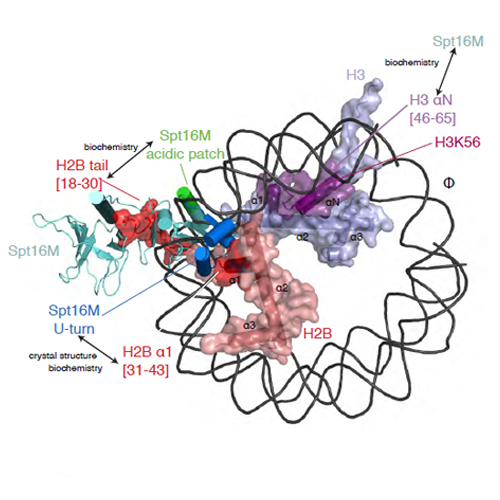Structural basis of histone H2A–H2B recognition by the essential chaperone FACT
22-May-2013
Facilitates chromatin transcription (FACT) is a conserved histone chaperone that reorganizes nucleosomes and ensures chromatin integrity during DNA transcription, replication and repair. Key to the broad functions of FACT is its recognition of histones H2A–H2B (ref. 2). However, the structural basis for how histones H2A–H2B are recognized and how this integrates with the other functions of FACT, including the recognition of histones H3–H4 and other nuclear factors, is unknown. Here we reveal the crystal structure of the evolutionarily conserved FACT chaperone domain Spt16M from Chaetomium thermophilum, in complex with the H2A–H2B heterodimer. A novel ‘U-turn’ motif scaffolded onto a Rtt106-like module embraces the a1 helix of H2B. Biochemical and in vivo assays validate the structure and dissect the contribution of histone tails and H3–H4 towards Spt16M binding. Furthermore, we report the structure of the FACT heterodimerization domain that connects FACT to replicative polymerases. Our results show that Spt16M makes several interactions with histones, which we suggest allow the module to invade the nucleosome gradually and block the strongest interaction of H2B withDNA. FACT would thus enhance ‘nucleosome breathing’ by re-organizing the first 30 base pairs of nucleosomal histone–DNA contacts. Our snapshot of the engagement of the chaperone with H2A–H2B and the structures of all globular FACT domains enable the highresolution analysis of the vital chaperoning functions of FACT, shedding light onhowthe complex promotes the activity of enzymes that require nucleosome reorganization.











